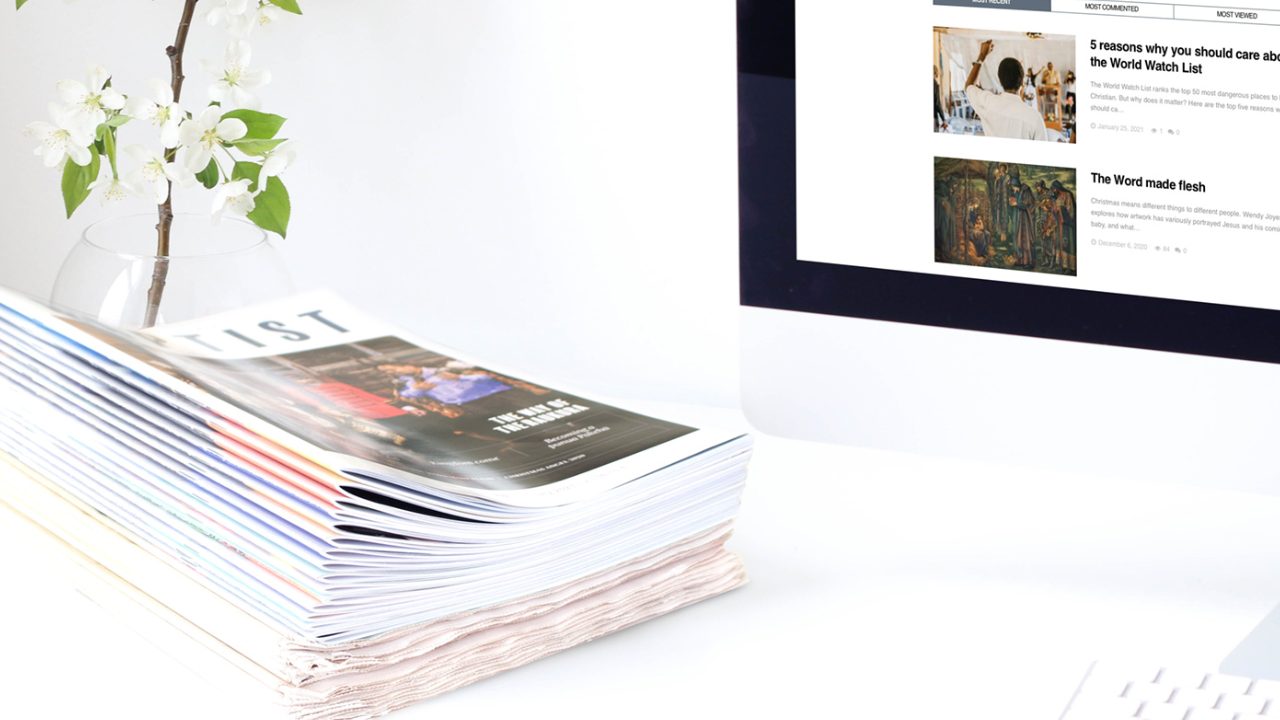
The Baptist magazine is the official publication of the Baptist Churches of New Zealand. Late last year, the Baptist National Centre advised subscribers that it intended to switch from a bi‑monthly print magazine to more web-based and other digital communications in the future. The magazine’s current team explains some of the rationale for this change.
In a geographically spread-out and diverse movement, the Baptist magazine has always been seen as a valuable means of creating a sense of connection between our faith communities.
It has also been recognised as a quality publication. In 2018 it received the Australasian Religious Press Association’s Gutenberg Award for overall excellence. It has also earned a string of other ARPA awards for design and writing over the years.
So, given all this, when you heard that the Baptist magazine would be moving from a print magazine to a digital communication model in the future, you might have asked yourself, “Why? And why now?” Let us explain.
Reaching more people
Although almost 80% of our New Zealand Baptist faith communities currently subscribe to the Baptist magazine—plus a small number of individuals—we estimate that we are currently reaching only 4,000 of the approximate 36,000+ Baptists ‘in the pews’.
We believe that mission is in the Baptist DNA. And we hold a vision of the Baptist Union of New Zealand being a collective of faith communities bringing gospel renewal to people and places in our local neighbourhoods. So, it is clear that we need to be reaching more people in our faith communities with the news, information and stories that will inform, encourage and inspire them in their mission.
Digital communication has the potential to reach further than a printed magazine ever will.
Communication trends
The Baptist magazine has not been alone in considering the future of its communications. A quick survey of five other major New Zealand denominations last year revealed two had ceased their print publications in 2020, with a move to a digital strategy. The remaining three were all in the process of investigating changes they might make to their particular communication models.
To some extent these moves are finance-related but it would be naïve to say exclusively so. The way people digest news and information is changing—they want and expect accessibility, recency and interaction. Being able to respond quickly to changing situations and stories with a magazine that has a two-month life cycle is not possible.
We all know communication trends are changing. If we are to stay relevant to the times and reach the widest number of people possible, as quickly as possible, then we will need to follow these trends. (You can read more about communication trends in an article on our website from the current President of the Australasian Religious Press Association, Sophia Sinclair.)
Financial stewardship
The Baptist magazine has been partly supported by heavily subsidised subscriptions and some revenue from advertising. The Baptist National Centre has borne the balance of costs.
Although the number of churches who subscribe to the magazine has not altered substantially in recent years, many churches have dropped the quantity of subscriptions they hold (i.e. the number of copies of each issue of the magazine that they receive every two months). Some indicated they have done so for financial reasons. Others, whether through falling attendances or less uptake among their members, have said that they no longer need as many copies as they had ordered in the past.
Coupled with this drop in subscriptions, there has been a simultaneous reduction in advertising revenue. COVID-19 certainly has not helped in this regard, but it was already an existing trend, especially across print media. Platforms like Facebook and Google can provide advertisers with cheaper and more targeted advertising than print media.
And finally, production and distribution costs are never fixed. For example, postage increased again in July 2020.
Of course secular media has faced similar challenges, especially with falling subscriptions and advertising. Several print publications have folded recently. Even online news outlets are not immune; some have installed paywalls for ‘premium’ content or have created reader donation programmes to fund their journalism.
As mentioned, the Baptist National Centre has borne the significant shortfall for a number of years but this cannot be continued indefinitely. In addition to wanting to reach a wider audience and in a way that more people want, for financial stewardship reasons some tough decisions needed to be made about the magazine’s budget.
What will, and won’t, change
The Baptist magazine is a publication that we can all be proud of, with a long history of fulfilling a need within our movement for greater connection. Change is never easy, but we are confident that this ethos of connection will be continued whichever communications model is finally decided upon.
We realise that some people prefer a hard copy in their hands to read. We are committed to investigating some options around this. What these would be is too soon to say, but rest assured, we want our communications to remain as accessible for our readers as possible.
What won’t change is our commitment to information that matters. Topmost in mind here is your stories—the stories of people and faith communities who are bringing gospel renewal to their local neighbourhoods.
The Baptist National Centre will soon appoint a new communications director role. This person will be part of the senior leadership team and will be responsible for developing the future communications strategy.
In the meantime, we on the Baptist magazine team just want to say this:
Thank you for the privilege of serving you. Thanks for your support and feedback over the years. And, above all, thank you for your inspiring and encouraging stories, which you have shared generously with the wider Baptist family. Stayed tuned for what is coming next!
Contributors: Baptist magazine staff


